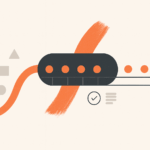Inside the AI Agent Factory: How Enterprises Are Standardizing Agent Behavior

In the early days of enterprise AI, experimentation was the rule. Teams launched pilot agents for marketing, HR, IT, and customer support—each built in isolation, with different tools, assumptions, and interfaces.
But as agentic AI matures and scales, the costs of that fragmentation are becoming clear.
Today, forward-looking organizations are taking a page from the UI world and building agent design systems: reusable standards that define how agents behave, interact, recover, and improve across domains.
This isn’t just a tooling shift—it’s a strategic evolution. And like all good design systems, it’s about consistency, scalability, and trust.
Why Agent Consistency Now Matters
When users encounter a human assistant, they don’t expect them to reboot their personality every Monday. The same should go for agents.
Yet many enterprises today suffer from fragmented agent deployments—one department’s AI behaves like a chatbot, another like a rule-based script, another like a rogue LLM improvising solutions.
The result? User confusion, brand inconsistency, and unreliable automation at scale.
“As agents take on more responsibility, they can no longer be one-off experiments. They need to operate within shared rules, shared memory, and shared accountability,” explains Robb Wilson, founder of OneReach.ai and author of The Age of Invisible Machines.
What Is an Agent Design System?
Much like UI design systems govern buttons, typography, and component behavior, an agent design system codifies how AI agents:
- Interpret intent
- Manage memory
- Handle handoffs (to humans or other agents)
- Communicate uncertainty
- Deal with failure and recovery
- Express tone, identity, and escalation pathways
It’s a meta-layer of design—part product, part process, part policy. And it’s essential for any company looking to scale AI responsibly.
At OneReach.ai, agent runtimes are built with orchestration and modularity in mind, enabling organizations to compose agents from consistent building blocks. That philosophy aligns closely with the AI-first approach Wilson advocates:
“In an AI-first world, intelligence becomes the interface. But intelligence needs guardrails. You can’t scale autonomy without orchestration.”
Core Components of an Agent Design System
So what goes into a mature agent design system? While each org will tailor it to their needs, leading teams focus on five pillars:
1. Behavioral Patterns
Just like UI patterns govern layout and flow, behavioral patterns define:
- How agents initiate conversations
- How they respond to ambiguity
- When they ask for help
- What tone they adopt in different contexts
2. Memory and Context Standards
Without a standard for memory:
- One agent might “remember” preferences for 30 minutes
- Another forgets immediately
- A third stores data permanently without clear rationale
A good system defines:
- Memory types (short-term, long-term, shared)
- Retention rules
- User override and visibility
3. Handoff Protocols
Agent → Human. Agent → Agent. Human → Agent.
Each of these transitions needs structure:
- How is context transferred?
- What affordances are shown to the user?
- How do we manage delay, ambiguity, or error?
4. Failure and Recovery UX
Not all AI fails gracefully. But in enterprise systems, failure is inevitable—so recovery needs to be intentional.
- Standard fallback behaviors
- “I don’t know” UX
- Human escalation rules
- Retry and learning loops
5. Tone and Brand Alignment
Whether an agent books travel or triages a support ticket, users should feel it’s speaking the same “language” across use cases. This means:
- Shared tone guides
- Consistent voice design
- Personality constraints
From Pilot Projects to Platforms
If this sounds like infrastructure work—that’s because it is. In fact, many organizations are beginning to treat agent behavior as a platform, not a feature.
OneReach’s orchestration platform exemplifies this shift. It offers enterprises the ability to deploy agents into persistent runtimes with unified memory, shared orchestration logic, and consistent interfaces. It’s not just about “training” an agent—it’s about standardizing its role inside an intelligent system.
Getting Started: How to Build Your Agent Design System
For AI/UX hybrid teams ready to scale responsibly, here’s how to get started:
- Inventory your agents: Map every existing bot, agent, or assistant across the organization. Identify behavior drift and inconsistency.
- Define your principles: Establish your “design philosophy” for agents. What’s your tone? What does success look like? What’s unacceptable? Here’s a great headstart: https://www.aifirstprinciples.org/
- Document core behaviors: Create reusable blueprints for handoffs, confirmations, escalations, and memory handling.
- Create governance pathways: Who approves agent behavior? Who audits logs? How is performance measured?
- Integrate with runtime tools: Use platforms like Reach.ai to enforce orchestration, not just intention.
Final Thought
Agents are no longer just features—they’re coworkers. As they multiply across the enterprise, their consistency will define user trust, organizational alignment, and long-term success.
That’s what the agent design system delivers. Not just more AI—better AI, by design.
The post Inside the AI Agent Factory: How Enterprises Are Standardizing Agent Behavior appeared first on UX Magazine.
This post first appeared on Read More

